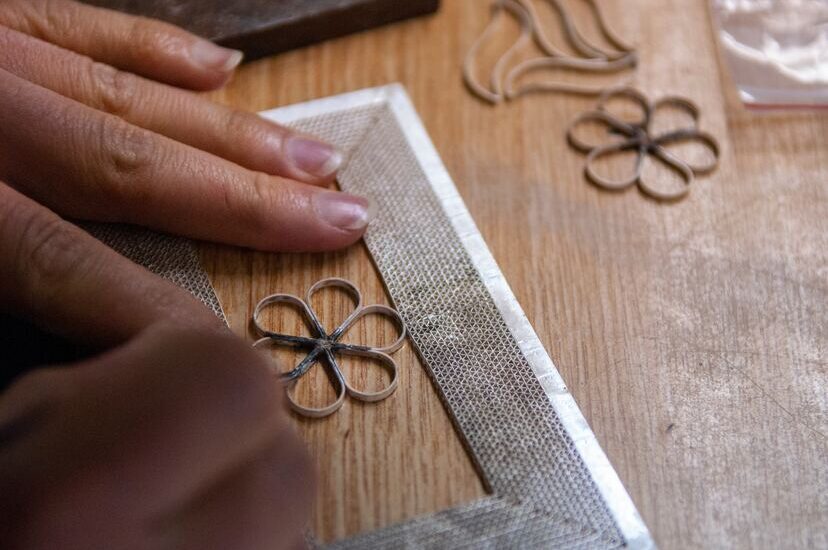- May 14, 2025
- Posted by: admin
- Categories: Textile and Apparel, Blog

Historically, India has had prominent arts and handicrafts. Indian artisans have and continue to create wonderful handicrafts such as woodwork, textiles, pottery, jewelry, leatherwork, and metalwork. Different regions and states in India have unique crafts.
Currently, the handicraft sector is one of the most renowned salient features of India’s national economy. It provides employment opportunities, especially in the country’s rural regions. Some artisans have passed on their skills to teach the hardships of doing the work. The products that they manufacture are famed for artistry and detailing, as well as a touch of tradition.
The Current Status of Handicraft Exports
Indian handicrafts are quite popular globally. The United States, the UK, Germany, Australia, and many others remain some of the largest consumers. Indian exports of rugs, ethnic jewelry, handmade paper goods, wooden decor, and metal crafts are growing. Even during the pandemic lockdown, India was one of the leaders in craft exporting.
People now want to purchase items that are handmade and eco-friendly, and India provides them with reasonably priced options.
Handicraft Export Opportunities
Exports from India’s handicraft sector show a lot of promise because of the following reasons:
Increased Worldwide Love for Handmade Goods
Handmade, organic, and sustainable products are preferred over machine-made goods across the globe. That’s why Indian handicrafts are eco-friendly and often made from natural materials.
E-commerce and Social Media
Digital sales have now become the easiest way of selling goods for manufacturers. This included opening up gates for customers from international boundaries to small and medium enterprises.
Many new entrepreneurs are trying their hands at e-commerce for artisans, helping them with guidance in design, smart marketing, and logistics.
Government Initiatives and Support
The central government of India is supporting the areas of handicraft marketing, too. Some of these initiatives include:
- EPCH Export Promotion Council
- Skill India Mission
- Marketing and financial aid schemes
- Specific handicraft trade fairs and expos
These collective measures ensure that artisans have better skills, improve access to finance, and get more targeted customers from around the world.
Improved Infrastructure and Logistics
The country’s transport systems have improved, along with its warehousing and shipping services. Therefore, exporting goods has also been made simpler. Global access to products is now straightforward and can be done quickly and safely, aiding exporters and transporters alike.
Transport innovation further minimizes the risk of damage and increases the desirability of Indian handicrafts to foreign buyers.
Merging of Traditional With Modern Designs
Contemporary design ideas are blended with traditional craft techniques by young artisans, and this helps to capture the interest of new-age consumers.
Customized products, minimalist craft styles, and multi-use decor items are becoming popular trends.
Challenges Faced By the Sector
Mining the possibilities is quite vast, but the industry does face some challenges:
- A decent number of artisans have little knowledge of the international markets.
- There is a lack of formal schooling as well as training.
- Artisans face difficulties in acquiring funds and working capital.
- Low packaging and branding standards further diminish the competitiveness of these products in the international market.
- There is stiff competition from machine-made and factory-produced goods.
Economically assisted, digitally available, or improved training can resolve these issues.
Role of MSMEs and Startups
Handicrafts’ transformation has been made possible through the efforts of MSMEs and startups. These new enterprises aid artisans by:
- Providing branding and design assistance.
- Aiding in the advancement and marketing of the products.
- Providing the necessary digital sales and inventory tools.
- Registering them with international clients.
Many modern companies are using Indian crafts to create and market apparel, accent pieces, and home decor, spearheading the sustainable lifestyle movement.
Opportunities for Indian Handicrafts
Indian exporters can rethink their strategies, including expanding geolocations and untapped markets.
- Scandinavian countries (Sweden, Norway, Finland) appreciate sustainability and minimalism.
- Japan and South Korea are fond of handmade and traditional goods.
- Latin American countries have a growing interest in international imports.
- African countries present a new market of cheap, crafted goods.
With the right plans and policies in place, India has the potential to dominate the globe in handicraft exports.
Conclusion
The prospects of handicraft exports from India are promising. As there is global demand, government support, and technology, artisans are now able to connect with the world. This not only increases revenue for the country but also helps in preserving India’s cultural legacy. Indian handicrafts can become global bestsellers with the right investment in skill training, branding, and digitization. To aid in this progress, companies like Credlix are helping exporters to scale their business with ease. Credlix provides exporters with the tools they require to streamline invoice discounting services. By using these platforms, Indian artisans can utilise several opportunities to fulfil more orders, reach more markets, and expand confidently.